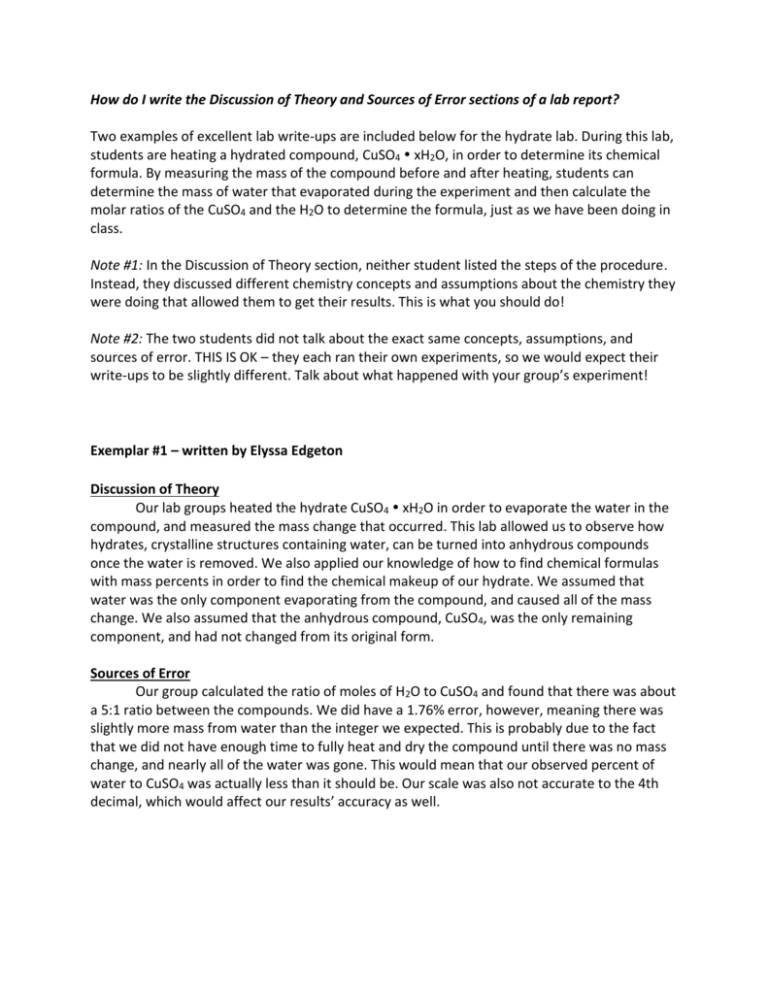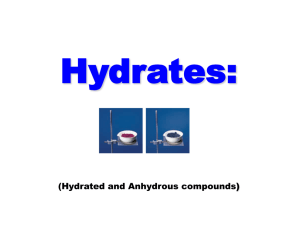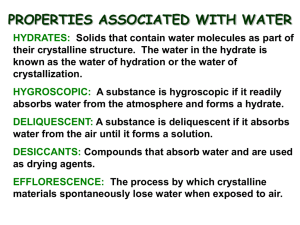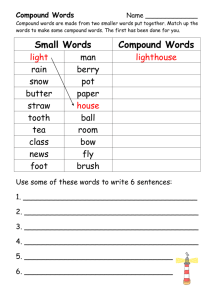Lab Write-up Exemplars using the Hydrate Lab
advertisement

How do I write the Discussion of Theory and Sources of Error sections of a lab report? Two examples of excellent lab write-ups are included below for the hydrate lab. During this lab, students are heating a hydrated compound, CuSO4 xH2O, in order to determine its chemical formula. By measuring the mass of the compound before and after heating, students can determine the mass of water that evaporated during the experiment and then calculate the molar ratios of the CuSO4 and the H2O to determine the formula, just as we have been doing in class. Note #1: In the Discussion of Theory section, neither student listed the steps of the procedure. Instead, they discussed different chemistry concepts and assumptions about the chemistry they were doing that allowed them to get their results. This is what you should do! Note #2: The two students did not talk about the exact same concepts, assumptions, and sources of error. THIS IS OK – they each ran their own experiments, so we would expect their write-ups to be slightly different. Talk about what happened with your group’s experiment! Exemplar #1 – written by Elyssa Edgeton Discussion of Theory Our lab groups heated the hydrate CuSO4 xH2O in order to evaporate the water in the compound, and measured the mass change that occurred. This lab allowed us to observe how hydrates, crystalline structures containing water, can be turned into anhydrous compounds once the water is removed. We also applied our knowledge of how to find chemical formulas with mass percents in order to find the chemical makeup of our hydrate. We assumed that water was the only component evaporating from the compound, and caused all of the mass change. We also assumed that the anhydrous compound, CuSO4, was the only remaining component, and had not changed from its original form. Sources of Error Our group calculated the ratio of moles of H2O to CuSO4 and found that there was about a 5:1 ratio between the compounds. We did have a 1.76% error, however, meaning there was slightly more mass from water than the integer we expected. This is probably due to the fact that we did not have enough time to fully heat and dry the compound until there was no mass change, and nearly all of the water was gone. This would mean that our observed percent of water to CuSO4 was actually less than it should be. Our scale was also not accurate to the 4th decimal, which would affect our results’ accuracy as well. Exemplar #2 – written by Orianna Olson Discussion of Theory In this lab we studied how to calculate the formula of a hydrate by heating cupric sulfate hydrate and periodically measuring its mass. We used three chemistry concepts which are: a hydrate is a compound that contains water, an anhydrous compound is a compound that has had the water driven off of it, and water of hydration is the water that is driven off. These theories helped me come to my conclusion by allowing me to calculate the amount of water in the hydrate using the water of hydration from the experiment. For this experiment I made the assumptions that all the water evaporated out of the compound and none of the cupric sulfate evaporated. These assumptions allowed me to use the mass of the compound in the calculations to find the amount of water in the compound. Sources of Error My dish was positioned further away from the flame and the flame was not very hot. These sources of error could have made my calculated amount of water in the compound smaller than the actual amount. The scale limited the significant digits to three in this lab. Because of these errors my percent error was very high at 55.94 percent error.









